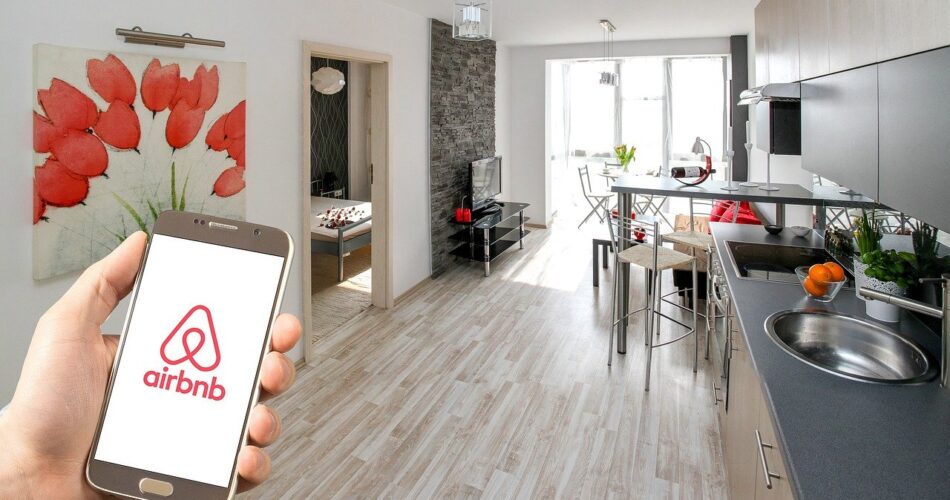Imagine you are a manager at one of the hundreds of budget hotels in your city. Your hotel is not doing phenomenally well, but occupancy rates are good enough for business to survive. You log into your email one afternoon and find a message like this:
You have no clue who sent this email to you. Should you be deleting this email? Perhaps. But then, you think, “February has always been a low month for the hotel business. Here you see a request from a potential customer that can fill 3 rooms for 4 days.”
You can ignore this message. But then, no harm placing a bid anyway, right? Best case – you secure good business. Worst case – you never hear back from them again. You place a bid for $75/night – that’s a good discount you are offering here. But no harm trying.
Next day, you get an email from the sender again. This time, you have won the bid and the customer wants to pay for it right away.
Your two minute gamble got your hotel a good $900 revenue in a bad month.
This short use-case scenario should give you a fair idea of what this business is about – it’s essentially a marketplace that connects travelers with hotels.
Travelers typically plan their travel with OTA (Online Travel Agent) platforms like Booking or Expedia. For hotels? You have Trivago too – but again, it’s just an aggregator of all these other platforms.
While travelers can view the prices before they book, there is no concept of bargaining. You pay what is asked of you. If you do want to haggle on the price, you call the hotel and book a room offline.
The business idea here is to bring the concept of haggling to online hotel booking. From a hotel manager’s perspective, not every guest is equal. There are those who book a single bed for a night - they are not as profitable as those who book multiple rooms for several days in a row. The manager is more likely to offer a nice discount for such bulk travelers.
Workflow
Here is a simplified workflow of an app like this:
- Traveler comes to your website or app and enters their travel details that includes the destination, number of travelers, number of hotel rooms required and the travel duration
- You process this request and share it over email with a list of hotels that qualify (based on destination, budget, etc.)
- Hotels that are interested in a request click on the ‘Bid’ button from within the email and enter their quote
- You share the list of quotes from various hotels to the traveler
- Traveler can make a decision based on the quotes received
The nice thing about this business idea is that it can be as simple or as sophisticated as you want it to be.
- The app could simply serve as a newsletter and do nothing more than offer a two-way communication between the hotel and the traveler
- Or, you could set up a payment system so that the traveler can make their booking directly through your platform
Tools required
When you are just starting out, I wouldn’t recommend building a sophisticated app that can accept payments. Because, you don’t know how successful you will be at this.
So what you could do is simply create a newsletter using one of the several email marketing platforms. You can take requests from travelers using a web form and manually send it to the hotel managers’ mailing list.
This only requires a few tools:
- A landing page builder like Wix that costs $15 a month
- A mailing list software like MailChimp. But it’s expensive. You can go for a cheaper option like Moosend. Pricing starts at $0 for up to 1000 subscribers
The marketplace dilemma
The travel mailing list is a marketplace that brings travelers in touch with hotel managers. Like every other marketplace, this comes with a challenge – what do you build first? The hotel database or travelers?
In this case, there is a very attractive proposition for the hotel manager – new business. You may start with a very small geographical area and seek to build a mailing list of hotels in this region. For instance, you may pick a touristy place like Chiang Mai (Thailand) or Kuta (Bali) that has hundreds of hotels Even a hundred or two hundred emails should be enough of a pull to sell to prospective travelers.
I may be accused of condoning grey hat marketing techniques here, but in my opinion, one way to make this business work is by adding hotel managers to your list without permission. You may, of course, send an outreach email to seek permission – but that would needlessly bring down the size of your database.
My guess is that the hotel managers would condone the ‘spam’ once they realize the value that you are bringing to them. You can maybe create dozens of such lists to target travelers to very specific towns or cities – this way, you keep the email highly relevant to the recipient and this keeps unsubscriptions low.
How do you promote it to travelers
This is the most challenging aspect of this business idea. For the hotel side of the business, your acquisition is primarily a numbers game – the size of your database grows with the number of hotels you reach out to. But how do you attract travelers to your business?
Here are a couple of different strategies you can try out.
Advertising – Advertise on niche travel blogs that cater to your travel audience. For instance, if you are catering to hotels in NYC, you can advertise on NYC travel blogs.
Leads – This can be a very effective lead strategy. Search for keywords like “group tours in NYC” and pick out websites that offer sightseeing packages (that do not involve hotel stay, of course). Offer to pay a lead commission to these websites for every customer sent your way. Goes without saying that the fee you pay for a lead should be lower than what you charge the traveler for posting on your mailing list.
There are however a couple of things to watch out for with respect to the PPL(pay-per-lead) model. Firstly, not every lead converts. That means, if you pay $5 for a lead and only 1-in-4 leads choose to pay for a listing on your service, you spend $20 for every listing.
Furthermore, it is very likely that you have partnered with several group tour service providers for leads. And, there is a good chance that there is overlap of leads passed on by each one of them. This is because tourists request a quote from several providers before they choose to go with one. In effect, you may end up paying $5 more than once for the same lead.
Nevertheless, I think this strategy can work well if you have low CPL (cost per lead) and also have not partnered with too many providers.
Content marketing – This is sort of a long term strategy. You can create content along the lines of “How to travel to NYC on a budget” and publish it on sites like Medium. Visitors searching for related topics come to your blog post and click on to get listed on your mailing list.
A more efficient way to do this would be to find articles that are already ranking for keywords like this on Google and reach out to the editors and explain what you do. Even a couple of writers willing to include your link in their articles is good enough to get a steady stream of new customers to your mailing list.
How much money can you make from this business idea
Hotels are a competitive business and there are tons of options (including Airbnb) that offer very cheap rates (even lower than the $75 per room mentioned earlier in this article). So I don’t think a traveler would be ready to pay anything more than $25 to get listed in your mailing list.
Let us also assume that the average CAC (Customer Acquisition Cost) is $10. That makes you a profit of $15 per listing.
I can’t think of a good way to gauge the real demand in the industry. But since I mentioned that you could acquire customers from companies that offer group sightseeing tours, I am going to use this as a metric to assess revenue potential.
According to Google Adwords planner, there is between 100-1000 searches for ‘NYC group tours’ each month. Although this appears to be on the low side, let us assume this is indeed true. At an average of 500 searches a month, we are talking about 6000 searches a year.
Let’s assume that the sites you partner with cumulatively get around 20% of this traffic. That’s 1200 per year.
That’s 1200 leads. If you can convince 20% of this number to part with $25, you make a profit of $3600 per year.
This is for one location. If you can expand this mailing list to 10 locations, that’s $36,000 per year. And honestly, it’s not a lot of work to expand it to more locations.
Doesn’t look that impressive anyway?
I agree. The revenue potential here doesn’t look as impressive as what I thought it would be. But I am convinced that the money you can make with this idea is a lot more than what the numbers above suggest. This is because I haven’t yet figured out a good way to acquire travelers who will pay for this listing.
Targeting group tour services is a good idea. But as the search volumes show, it is not fantastic by itself. The real numbers are likely to be much higher. Would reaching out to tour operators offline be a good idea and help you get more leads? Possible.
But what will really make this idea work is if you can figure a better way to get a steady stream of new customers at relatively low cost. Do you have ideas that you think will work? Share it with us in the comments.



